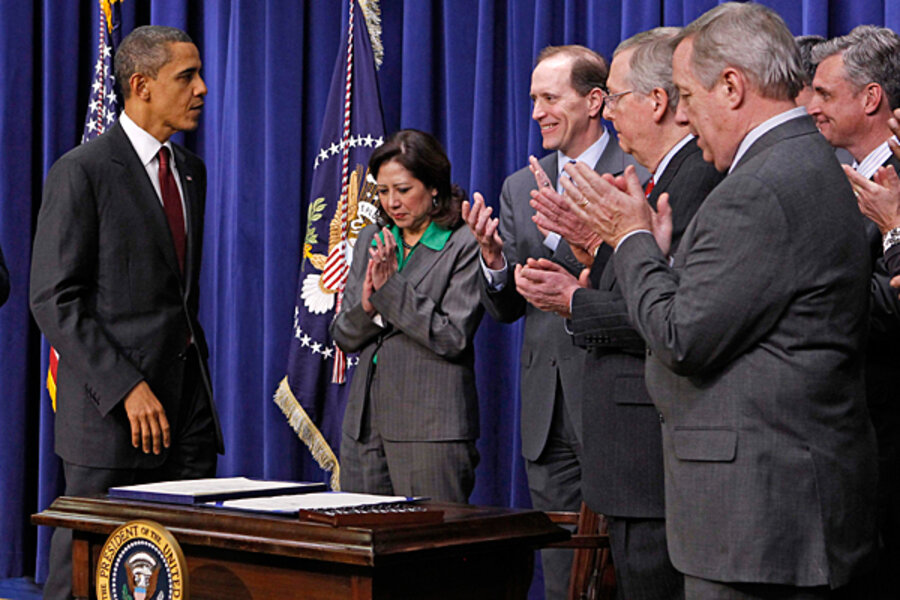This group is all about showing that Democrats, Republicans, and independents can work together to make tough choices. It says its plan "attacks our debt problem from all sides" to steer the nation off an unsustainable debt path.
Taxes. Overall federal tax revenue would rise to 23.1 percent of GDP by 2035, similar to a Congressional Budget Office (CBO) baseline, which assumes an end of Bush tax cuts.
• Eliminates most deductions, to "broaden the base" of taxable income.
• Simplifies the tax code from six income tax brackets to two, with rates of 15 and 27 percent.
• Imposes a new "debt reduction sales tax" of 6.5 percent.
Spending. Federal spending would fall to 23.7 percent of GDP in 2035 from the CBO baseline forecast of 28.3 percent.
• Reduces defense spending sharply, to 2.4 percent of GDP.
• Sets budget-process reforms to trigger spending discipline if Congress can't act.
Entitlements. Spending on health and Social Security programs would be restrained to 15.4 percent of GDP in 2035, a bit below the CBO baseline.
• Transitions Medicare to a “premium support” model that limits growth in federal support per beneficiary (to annual rise equal to GDP growth plus 1 percent, versus current projections of GDP plus 1.7 percent).
• Enhances Social Security benefits for the very old and very poor.
• Raises the cap on payroll tax, so that 90 percent of earnings are taxable.
• Changes cost-of-living formula for Social Security, to more accurately reflect inflation.
Deficit or surplus. Deficit of 0.7 percent of GDP in 2035, versus a 5 percent deficit in the CBO baseline forecast.
Debt. The plan brings public debt down to about 38 percent of GDP by 2035. That's an aggressive reduction compared to most other plans, and compared to CBO forecasts that debt could be at 92 percent of GDP or much higher by that year.





